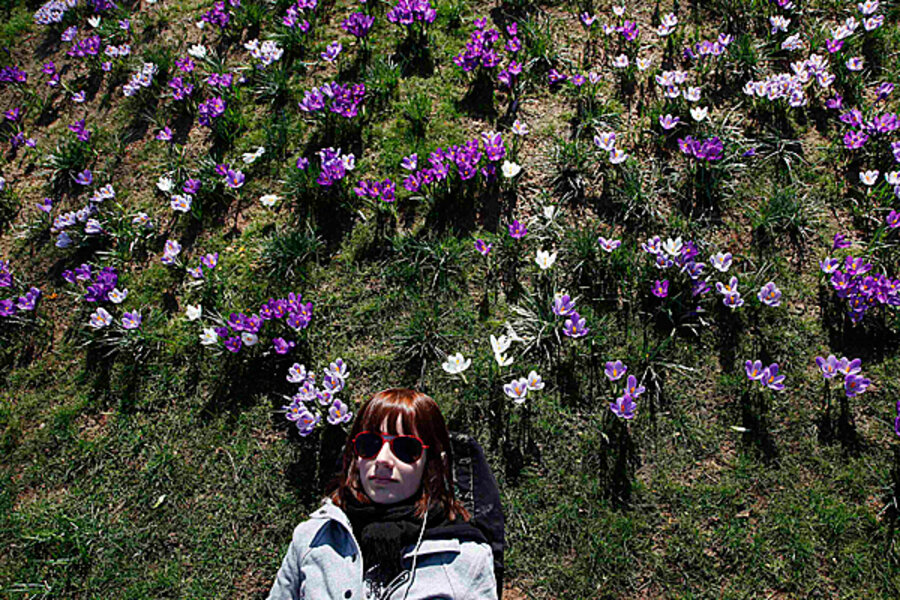Old tradition for Spring equinox 2010: burning socks?
Loading...
Call it what you like – the vernal equinox, the Spring equinox, or merely Saturday – March 20 marks the first day of Spring for folks in the northern hemisphere.
Spring's arrival and its sense of renewal have been marked in many ways over the millenniums – pagan festivals, solemn religious rites, Igor Stravinsky's "The Rite of Spring," balancing an egg on its narrow end (which you can do any time of year).
But for sheer sartorial renewal, few Spring-equinox celebrations top (or, perhaps, bottom) the Annapolis Maritime Museum's annual Sock Burning ceremony.
First, a few words about the seasonal transition prompting the pedalian party.
Astronomically, of course, the Spring equinox (and its Fall counterpart) marks the moment when the center of the sun's disk appears directly overhead at the Equator. This year, the vernal equinox will occur at 17:32 coordinated universal time (1:32 p.m. Eastern Daylight Time) March 20, 2010.
The event is welcome for earthlings. It's spectacular on other planets.
Saturn, for instance, experiences an equinox once every 15 years, compared with six-month intervals on Earth.
The Cassini spacecraft, currently orbiting Saturn, gave scientists a remarkable set of images during the planet's equinox last August. Its fabled rings, with only the reflected light from the planet's cloud tops to illuminate them, glowed faintly on the sunlit side, where they cast a razor-thin shadow across the giant planet's face. On the night side, they appear to virtually vanish.
The equinoxes should not be confused, by the way, with a day experiencing virtually equal hours of daylight and darkness. That day has been given the somewhat vacuum-cleaner-like title of equilux. This year, the Spring equilux in Boston occurred on March 17; in San Diego, March 16. Its date depends on latitude.
Now, back to sock burning.
The yachting set, or so the story goes, tends to wear deck shoes sans socks between the vernal equinox and winter. Allowances are made for the sensitive of the foot on days when temperatures fall below 30 degrees Fahrenheit and winds top 17 knots (about 20 miles an hour). They call it the "wimp-chill factor."
As Maritime Museum Director Jeff Holland recounts it, the tradition began in the mid 1980s thanks to Bob Turner, who managed the Annapolis Yacht Yard.
"He spent winters working on OPBs – other peoples' boats," Mr. Holland explains. At winter's end, Captain Turner would end up with socks home to a variety of debris and dried varnishes and fiberglass goop. One day, which happened to be the Spring equinox, he shed his socks, headed out onto the pier with a paint-roller tray, put the socks in and doused them lighter fluid, and tossed in a match.
The rest is history.
The tradition faded for a bit once Capt. Turner moved away. But about 10 years ago, the museum resurrected the event. Crowds tend to be small. And a barrel of oysters and a shucking knife have been added to the activity. Otherwise, it tends to be a modest affair, with very little advanced publicity beyond a handful of emails, Holland says.
Over the years, the tradition has expanded up and down the east and west coasts – and in between. Holland says he received a query from a marina on a lake in Kansas, where some mid-continent mariners were interested in picking up the tradition.
And if you aren't on the email list? You can always break out your Equilux and do some Spring cleaning!





